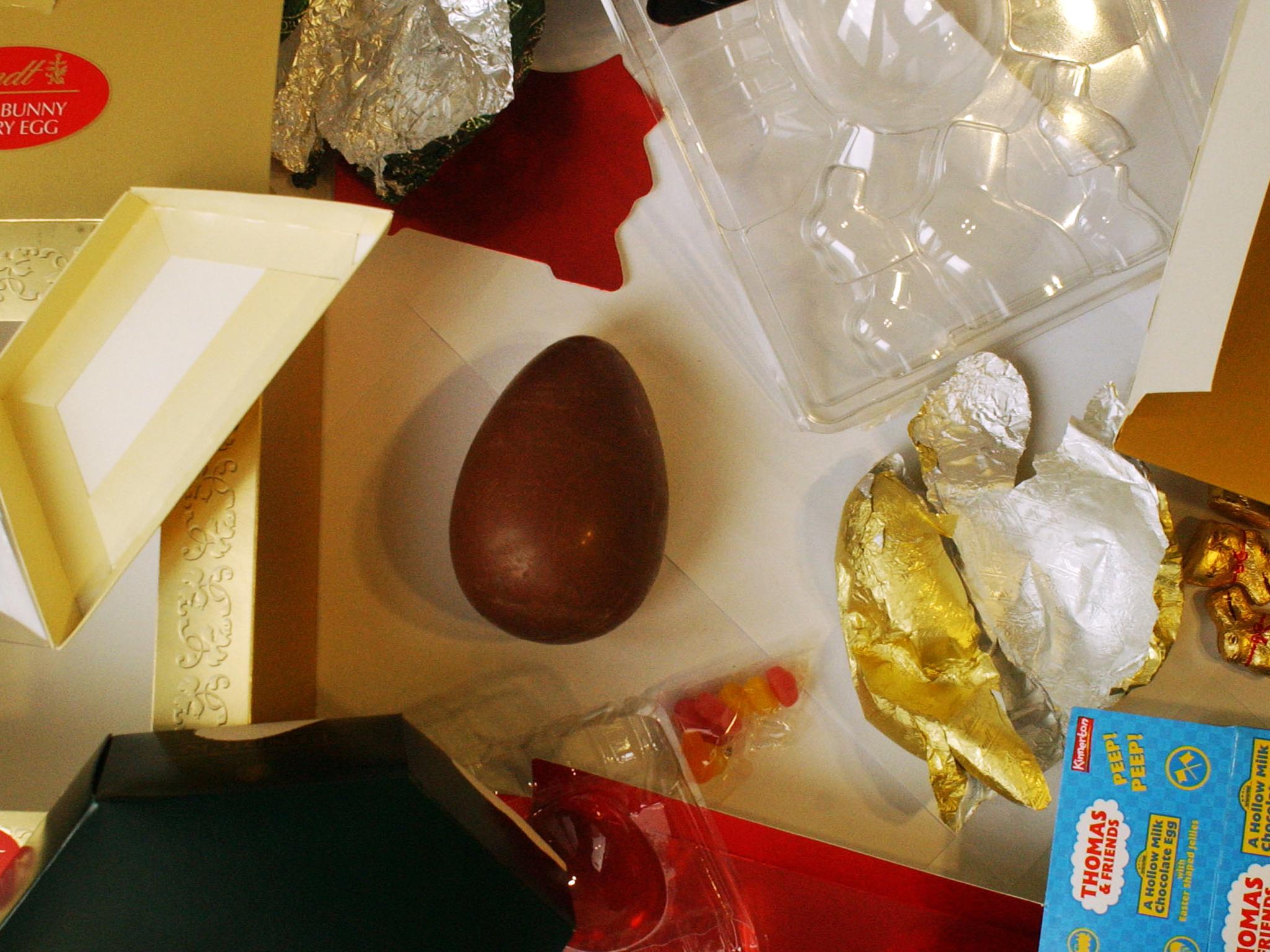Why we need a solution for excessive Easter egg packaging now
Do we really need to celebrate with boxes and plastic?

Your support helps us to tell the story
From reproductive rights to climate change to Big Tech, The Independent is on the ground when the story is developing. Whether it's investigating the financials of Elon Musk's pro-Trump PAC or producing our latest documentary, 'The A Word', which shines a light on the American women fighting for reproductive rights, we know how important it is to parse out the facts from the messaging.
At such a critical moment in US history, we need reporters on the ground. Your donation allows us to keep sending journalists to speak to both sides of the story.
The Independent is trusted by Americans across the entire political spectrum. And unlike many other quality news outlets, we choose not to lock Americans out of our reporting and analysis with paywalls. We believe quality journalism should be available to everyone, paid for by those who can afford it.
Your support makes all the difference.So which Easter tradition came first? The packaging or the egg? The answer is of course not that surprising (it’s the egg). The tradition of giving people eggs at spring time has roots in ancient pagan festivals and exists in the history of a range of religions.
It is only in recent decades that the amount of packaging around a hollow chocolate egg has become a noticeable problem – partly because of a rise in the number of eggs sold. It’s true that some manufactures have made progress in reducing packaging, with a big focus on reducing plastics. Many popular eggs are wrapped in just a layer of foil and a card box (plus any wrappers that come on accompanying confectionery). But this does not mean the problem has gone away.
A report by Which? revealed that around a quarter of the total weight of Easter eggs sold in the UK is taken up by the plastic and cardboard packaging they are wrapped up in. The outer packaging of one of the top 10 selling brands tipped the scales at 152g of a 418g product (36.4 per cent).
According to the environmental charity Friends of the Earth, Easter egg makers are still failing when it comes to plastic waste. This leads to some 3,000 tons of packaging waste each year. But it is too easy to blame the manufacturer – after all, we buy the eggs.
And the packaging does play some role in protecting the chocolate from damage and contamination – otherwise you may end up with food waste (which is actually far worse).
We appear to be at a stalemate – manufactures do not want to change the big, bright packaging in fear of losing sales. Customers still want to present their friend or relative with a pristine, attractive, traditional gift.
Breaking with tradition
So how can food providers and consumers help to reduce packaging waste? Here are a few options (although some may not be so sweet).
Make the eggs flat. A two-dimensional egg can be packaged far more easily and is less prone to damage than a 3D egg which requires additional packaging to protect those thin chocolate walls around a hollow space. Flat eggs could be made just as attractive and would certainly taste the same. They would also improve logistics efficiency by not having to transport so much air.
“Build your own” Easter egg kits – packs could include everything you need to produce a bespoke egg (including two egg halves) for your loved one. There would be no need for plastic packaging and you would be giving a personalised, hand-crafted gift.
Opt for cardboard and items wrapped in packaging that can be recycled – such as cardboard and foil. Typically, it is the more luxurious brands which want to show off their extravagant produce in-store that still use large amounts of plastic.
Avoid getting drawn in by the additional items or “gifts” that may come with eggs. These are the kind of gifts that nobody really wants, such as a low-quality mug or plastic toy – and the negative environmental impact of producing those could be much greater than that of the chocolate egg and packaging combined. And you will pay a premium for them.
Ignore chocolate this Easter and opt for something more meaningful. Regardless of your religion (or lack of), Easter is about new life, not new waistlines. Bake or make something (egg shaped if you like) that your family will really like and will mean much more to them than manufactured chocolate. And which the planet will thank you for too.
Whichever way you choose to cut down on packaging this Easter, remember that this is just one of many ways you can reduce your household waste. The world it seems is in the midst of a packaging crisis. Together we can (ahem) crack it.
Elliot Woolley is a lecturer in sustainable manufacturing at Loughborough University. This article first appeared on The Conversation (theconversation.com)
Join our commenting forum
Join thought-provoking conversations, follow other Independent readers and see their replies
Comments